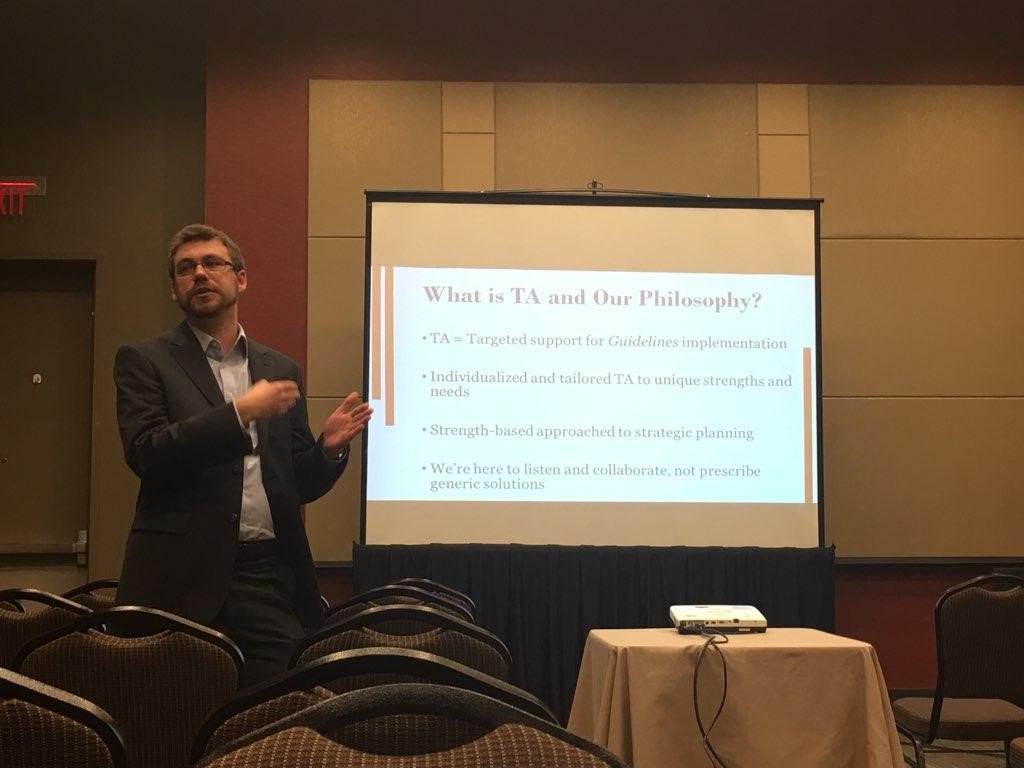
Allow me to begin with a confession: I’m a researcher at heart, and I have an unhealthy obsession with data. This has its benefits (bear with me . . .): If you make an argument you can support with data, I will be on your side, all in. But it also has a downside: sometimes, while the data suggests a certain course of action, because “it will likely result in the best outcomes,” this actually doesn’t convince normal humans, and it certainly fails to quiet our conscience which asks, “is that really the best thing to do?”
My boss Zoë concluded her powerful blog post on empathy in juvenile drug treatment courts (JDTCs) with these words: “When [JDTC staff’s] overwhelming commitment to, concern about, and empathy for the kids they serve is so evident that it shows on their face . . . That is precisely what we want to harness and build on.” In this National Drug Court Month, I want to once again recognize the incredible commitment, empathy, and compassion shown by many wonderful professionals in JDTCs.
Their stories are rarely told outside of courtrooms. They are the people who, with no expectation of recognition, will drive 14 hours through the night to pick up an abducted child and reunite him with his family. They are treatment providers who answer their phones at 4 a.m. to respond to a child who is struggling with thoughts of using. They are police officers who will spend an entire shift finding a safe space to recover for the girl wishing to end her life. It’s easy for people like myself, who have spent more time than I’d like to admit inside the “ivory tower” of academic thinking, to jump down the throats of dedicated practitioners and ask questions about the “evidence” for that course of action, but that, as I have come to learn from providing training and technical assistance to courts around the country, almost entirely misses the point. (Besides, I don’t think anyone has produced any meta-analyses on the impact of 14-hour night drives on juvenile justice outcomes). The point here is that while data “may suggest” a certain outcome, and researchers like me enjoy evaluating those outcomes, for a JDTC practitioner faced with one child in need of services, “an aggregate increase in successful outcomes of 15 percent” doesn’t really mean much. JDTC teams deal with real humans every moment of their working day, not effect sizes and nationwide outcomes.
It’s true that some JDTCs employ practices and policies which do not have a strong evidence base. But it is also true that the Office of Juvenile Justice and Delinquency Prevention (OJJDP), and our colleagues at AIR, in consultation with a team of experts in the field have spent several years putting together a comprehensive set of guidelines for JDTCs. The Juvenile Drug Treatment Court Guidelines are a synthesis of how to mimic the best of the best and how to avoid practices which don’t help the children we all care so deeply about. We know, for example, that kids who have a high risk of committing more crimes, and have a diagnosed substance use disorder, will likely benefit far more from JDTCs than those who do not. Much like an invasive medical procedure, JDTCs are intensive, hard work, and have “side effects” (increased supervision, increased time under judicial supervision etc.). As with all treatment, the risk of doing harm (or the negative consequences of the side effects) must be weighed against the potential to do good.
As our team has worked with courts, this conversation about the potential for harm has been a sticking point; not because courts don’t value research or data, but because people who are compassionate find it understandably difficult to turn away anyone they might be able to help. Dr. Edward Latessa at the University of Cincinnati has shown that having the wrong people in a JDTC risks doing harm to those participants. But this isn’t always a decision completely in the hands of the courts. Some states require JDTC participation to avoid suspension from school after being caught with drugs on school premises. These policies are likely detrimental to the individual, and, potentially to the court. For the child in question, being caught with a joint on school premises is neither confirmation of a substance use disorder, nor an indicator the juvenile will ever be involved in any additional criminal activity. Our project has, I’m pleased to say, helped several courts modify their eligibility requirements to ensure that their JDTCs are only working with young people most likely to benefit from the program.
Our training has also taught me something: Most JDTC practitioners genuinely understand that there is potential for harm accepting lower-risk individuals. Yet even knowing that, when the options are the JDTC or nothing (where nothing could mean seriously detrimental consequences), they chose the JDTC as the lesser of two evils. Data alone will never trump compassion, nor should it. But in this National Drug Court Month, I want to remind the field: Drug courts can’t fix everything. For some kids, JDTCs work well, and for others, they don’t.
Data tells us JDTCs don’t work for every child, and compassion tells us these vulnerable youth need a program to help them overcome the barriers they face. I want to encourage policymakers, researchers, practitioners and reform advocates to wrestle with this question: If the JDTC isn’t the right place for an individual child, what else can we do?
Matt Collinson is a Senior Research Specialist working on the OJJDP-funded Juvenile Drug Treatment Courts (JDTC) Initiative at the Justice Programs Office (JPO).
